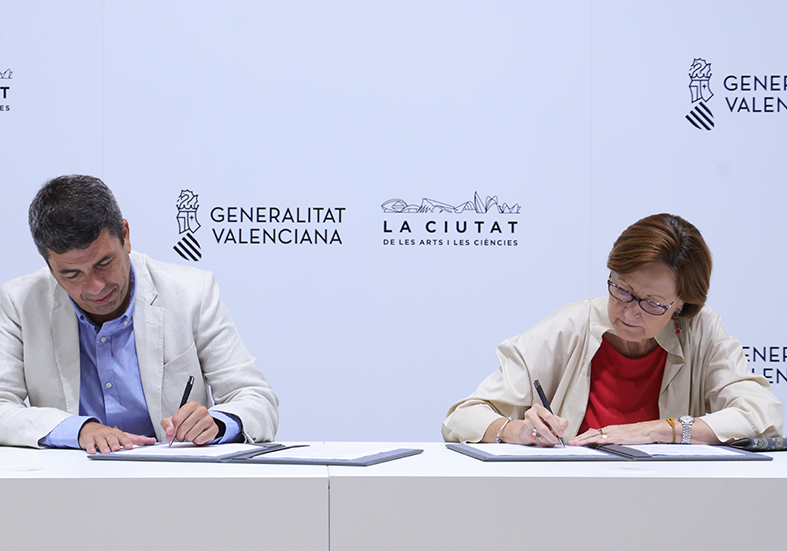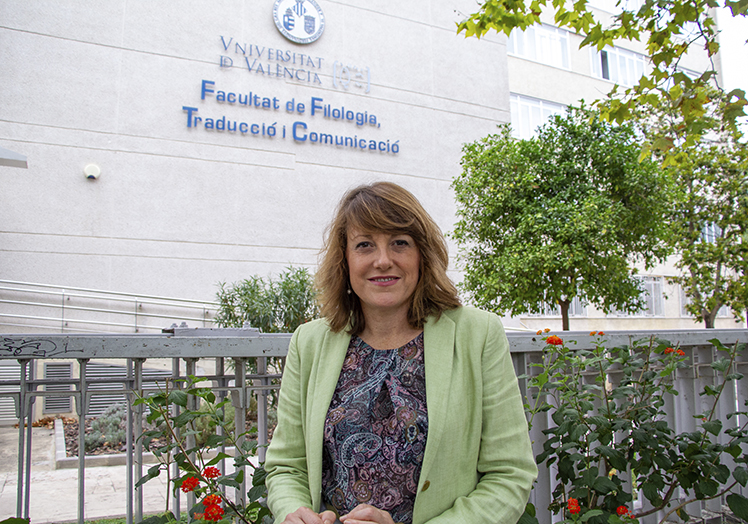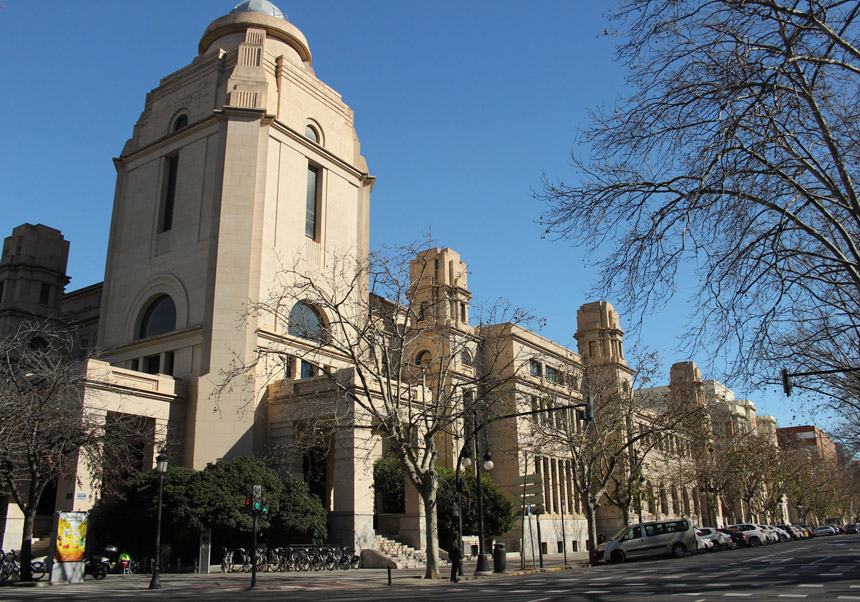The University signs an agreement with the Valencian Space Consortium to promote research in Valencia
- Marketing and Communication Service
- Remei Castello Belda
- July 24th, 2025

The Universitat de València has signed a collaboration agreement with the Valencian Space Consortium for the use of the ESA-VSC European High Power RF Space Laboratory. With these collaborations, the installations of the Universitat de València contribute to give answers to the challenges of the international space centre.
The signature of the agreement had place on Wednesday, 23 July in the Museu de les Ciències Príncipe Felipe with the attendance of the Dean of the Universitat de València, Mavi Mestre; the president of the Generalitat, Carlos Mazón; the counsellor of Education, Culture, Universities and Employment, José Antonio Rovira; and the rector of the Universitat Politècnica de València, José E. Capilla.
The agreement seals the compromise with the Universitat de València of maintaining to the exclusive disposition of the VSC an space of 585m² in the School of Engineering (ETSE), along with the necessary scientific equipment for the operation of the LESA-VSC European High Power RF Space Laboratory reference in space applications. This agreement consolidates and prorogues the collaboration that the entities already maintained from 2010, reinforcing the Valencian alliance with the European Space Agency and the scientific activity in Valencia.
The agreement will be in force until 31 March, 2029, with the possibility of prorogue of up to 4 additional dates, and maintains the cession of the headquarters of the School of Engineering (ETSE), located in the Burjassot-Paterna Campus, totally dedicated to Valencian Space Consortium (VSC) for the development of their research activities and technological development in the space field.
The Dean Mavi Mestre has pointed that “disposing of official facilities for the European Space Agency inside our campus is a recognition to the excellence of our University, that hopes to continue making thus project grow for at least 15 more years”. The Dean also has referred to the participation and collaboration of the University with the Valencian Space Consortium and specially to the dedication of the professor Benito Gimeno.
The University has contributed for years to proportionate spaces in the School Of Engineering, located in the Burjassot-Paterna Campus, where it is located since 2012 the ESA-VSC European High Power Space Materials Laboratory. The Laboratory, that is led by the professor of the Universitat de València Benito Gimeno, is mainly dedicated to the analysis and characterisation of materials and covering of telecommunication equipment on-board satellites that must transmit with a lot of power from the Space. The correct election of materials and coverings is fundamental for the success and survival of the mission, during all the years for which it has been designed for.
The laboratory of the Universitat de València disposes of a white room with a high performance, as well as an on point scientific-technical equipment, that is operated by the research and teaching staff that has participated in more than 100 test campaigns, as well as many R+D projects in collaboration with the ESA, the VSC and the UPV.
An impulse of Valencian leadership in science and space innovation
The agreement, of a strategic character and oriented to innovation, transference and technological development, aims to contribute decisively to the European social and economical progress from the space sector. The Valencian Space Consortium (VSC), formed by the Universitat de València, the Universitat Politècnica de València, the Generalitat and the Valencia City Council, will continue with their key role as a platform of reference in Europe in collaboration with the European Space Agency.
A huge collaboration
The European Space Agency (ESA) has two European laboratories in Valencia managed by the Valencian Space Consortium.
The first -High Power RF Laboratory- was built in 2010 with the UPV. It is dedicated to test the well functioning of the components on the telecommunication equipment in satellites of the ESA.
The second -High Power Space Materials- was built in 2012 in the Universitat de València (in the ETSE). It is dedicated to analyse and study the materials and covering with which the telecommunication equipments in satellites of the ESA are fabricated with.
File in: Recerca, innovació i transferència , Internacionalització recerca , Escola Tècnica Superior d'Enginyeria , Institucional
















